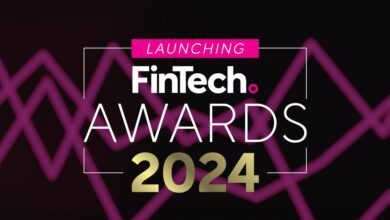Can Crypto Become a Mainstream Payment Method?

In recent years, digital currencies have been all the rave. However, the idea that digital assets are exclusively some form of currency is slowly falling by the wayside as different use cases are emerging and being rapidly adopted. This May, The Fintech Times is looking to showcase some of these new methods and explore how the digital asset ecosystem is evolving.
Cryptocurrencies are most commonly associated with trading, due to volatile prices, and significant success stories like Bitcoin. But could crypto break out of this shell, and become a mainstream payment method? What would need to happen before this becomes a reality?
To find out, we hear from a number of industry leaders, who share their thoughts on the future of crypto and payments.
Does crypto need to prove its credentials?
Bitcoin has already proven itself as ready to become a medium of exchange, and will inevitably evolve into a trusted payment method, says Mukarram Dhorajiwala, head of marketing and branding at Occams Advisory.

“It needs to be understood that historically before any currency or commodity is adopted as a medium of exchange (MoE) it needs to be first adopted as a store of value (SoV). Bitcoin in this regard has a proven track record as a SoV technology since 2009 mainly due to its true decentralised and security features, hence as more and more users participate in the Bitcoin network, it will eventually evolve into a MoE.
“Making bitcoin wallets digitally native to Apple and Android OS can revolutionise and drive the adoption of bitcoin right into the mainstream globally. We have also seen significant strides from products like Bitkey by Jack Dorseys’ Block Inc. Which is trying to solve the UX problems of holding bitcoin in a secured self-custody significantly cooler and easier for non-technical users.”
Key barriers to adoption
Key barriers still stand in the way of cryptocurrencies becoming a genuinely mainstream payment method, according to Alejandro del Rio, regional director of LatAm at Paymentology.


“Cryptocurrencies have the potential to become a key tool for both businesses and consumers, enabling cost-efficient cross-border transactions, access to stablecoins and a gateway to owning digital assets. However, they have not significantly disrupted the daily payment routines of consumers and businesses due to the absence of fast and reliable links to traditional payment networks.
“One of the key hurdles holding back regular cryptocurrency usage is the multiple-step exchange and withdrawal process required to spend with regular merchants, taking minutes at best and days at worst.
“Next-gen payment processors have the tools to enable the integration of cryptocurrencies with traditional payment networks, working in close collaboration with exchanges and blockchain technology companies to enable businesses and consumers to spend their cryptocurrencies instantly.
“This task is not simple, requiring cloud-native infrastructure and strong API integrations. The combination of the cutting edge of the payments industry and the most innovative Web3 platforms has the power to enable businesses and consumers to rely on cryptocurrencies when interacting with regular point-of-sale and e-commerce checkouts, reducing a key barrier to greater mainstream adoption of crypto as a payment method.”
Price volatility and regulatory disparity
Cristiano Ventricelli, VP of digital economy at credit ratings and insights provider Moody’s Ratings, also reveals the challenges associated with the crypto world becoming a popular payment method.


“Cryptocurrencies such as BTC and ETH face challenges in gaining traction as payment methods due to their inherent volatility, limiting their utility in everyday transactions. In contrast, stablecoins are steadily gaining attention from leading payment providers like Visa and Mastercard.
“Fintech giants such as Stripe have recently announced integrations with USDC stablecoin, while others like Paypal have developed their own stablecoins for payment purposes.
“However, the broader adoption of stablecoins is hindered by several obstacles, including the lack of clear regulatory frameworks in many jurisdictions, occasional fragility in maintaining their peg during market distress, and uncertainties surrounding the use of public permissionless blockchains by institutions due to technology risks and tight regulatory stance.”
Mainstream adoption is a long way off
Currently, the demand for using crypto to make a payment simply does not exist, says Scott Lieberman, founder of Touchdown Money.
“According to a 2021 Oliver Wyman survey, less than one per cent of Americans plan to use cryptocurrency to pay for items in the future. That shows crypto is a long way off from being accepted as a potential replacement for cash and plastic. So what needs to happen for that to occur?
“Mainly, consumers need to agree that crypto has value. Without the backing of the US government, our paper money and coins would be worthless. Crypto doesn’t have any form of backing, so it lacks any agreed-upon value. Where a dollar is a dollar, crypto could be valuable to one person yet unwanted by the next.
“Second, crypto must be more stabilised. The market for bitcoin is highly volatile, and wild swings in currency lead to an inflation roller coaster.
“Finally, each transaction carries a high price point. Credit card fees are a manageable three per cent, while cash carries no fee. Bitcoin cannot compete with that, making it impractical to use as a currency. If these factors don’t change, crypto will never be accepted as a true form of currency.”
Taking steps to change crypto’s fate
Bakhrom Saydulloev, product lead at a global payments infrastructure platform Mercuryo, outlines the process that crypto must go through to become a more accepted payment method:


“Firstly, enhancing the user experience is essential. This means providing familiar UX and seamless on-and-off-ramping processes akin to those found in traditional Web2. Innovative on- and off-ramp solutions are addressing a key pain point in this space and opening up the path for mass adoption in crypto.
“Additionally, fostering institutional adoption is crucial. Collaborations with banks and financial institutions worldwide to integrate blockchain technology into their systems can revolutionise international payments.
“By replacing outdated systems like SWIFT and democratising global payment systems such as Visa and MasterCard, we can pave the way for wider crypto adoption. Building alliances with prominent institutional players and biggest banks and dispelling misconceptions about cryptocurrency as a ‘scam’ are also vital steps in showcasing its potential as a transformative technology in the realm of finance.”
Addressing challenges
Micah Kershner, SVP of digital assets at Paysafe, also outlines three areas of progress required: “It depends on the jurisdiction that you’re operating within. However, there are three main points of consideration that need addressing, and they’re all interconnected. That of the user, the merchant, and the tax official.


“Addressing the user first, there needs to be an inherent benefit, and this must go further than the benefits that they would get from transacting with traditional payment methods. It’s critical that organisations work to solve the challenge of on-ramping and off-ramping i.e. the exchanging of fiat currency (such as US dollars) for cryptocurrencies and vice versa. Crypto wallet applications that are linked to a liquidity provider are a good way around this.
“To increase merchant adoption, there needs to be enough user demand and transactions need to be fast and easy. Here, it’s critical that the tech is integrated into point-of-sale (POS) systems, terminals, online shopping carts, and gateways, and there needs to be value for the merchant, such as a cost reduction.
“Finally, to really drive adoption, the transaction cannot initiate a taxable event. In the US, this limits the cryptocurrencies for everyday purchases to stablecoins, however, in markets without capital gains, this is less of an issue.”
The importance of trust
A key barrier to mainstream adoption is trust, explains Scott Major, CCO of global payments platform Transact365: “There are currently over 295 million cryptocurrency users worldwide, with over 10 per cent of UK adults estimated to hold or have held some form of crypto asset. However, cryptocurrency is not always deemed as an accessible or necessary payment method.


“A large component of this is trust. As with any new or alternative financial service, trust and user experience are paramount to driving adoption for cryptocurrency. One way to enhance trust is for crypto exchanges to integrate more traditional payment technologies that support fast, secure, and user-friendly transaction experiences.
“For example, implementing widely used local instant payment methods and reducing transaction fees can encourage more frequent trading and boost user engagement. Furthermore, creating a seamless user experience similar to that of Apple Pay or Google Pay is critical in user uptake.
“Another aspect to consider is how to make crypto more cost-effective for the user. For example, if crypto exchanges were to partner with a local payout solution that we can offer, they’d be able to eliminate intermediaries like banks, resulting in reduced fees and more cost-effective solutions for users.”
Merchants need to embrace crypto
Finally, Bryan Feng, head of Unlimit Crypto, breaks down what crypto must become to encourage its adoption as a mainstream payment method.


“Payment methods need to be easily accessible, quick, secure, and cheap. The removal of fee-charging intermediaries and increased scrutiny of regulators has left only speed and accessibility to be addressed.
“While transactions themselves may occur almost instantaneously, the pre-purchase process is often far slower and more complex than with traditional payment methods. The additional complexity of transacting in cryptocurrency remains off-putting to many.
”Merchants need to fully embrace cryptocurrencies as a viable payment method, which is quickly becoming more popular. This embrace will streamline payment processes by integrating new crypto-focused APIs and support the creation of additional onboarding routes built for simplicity.”



